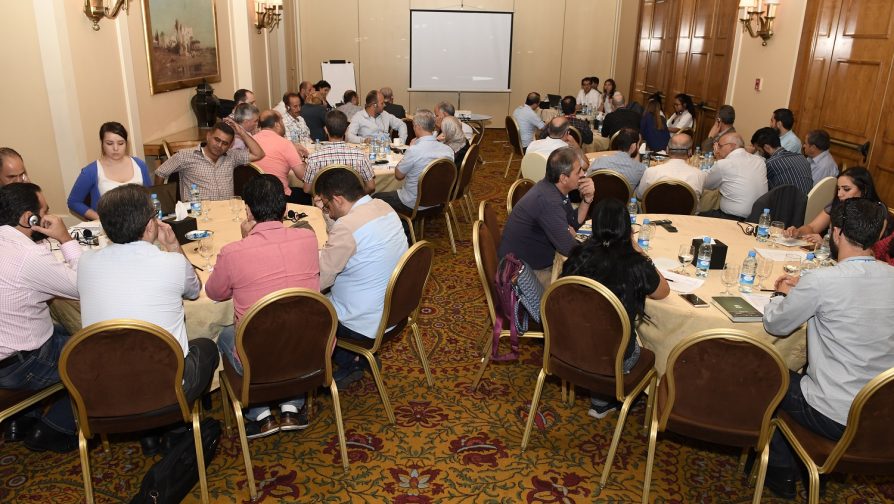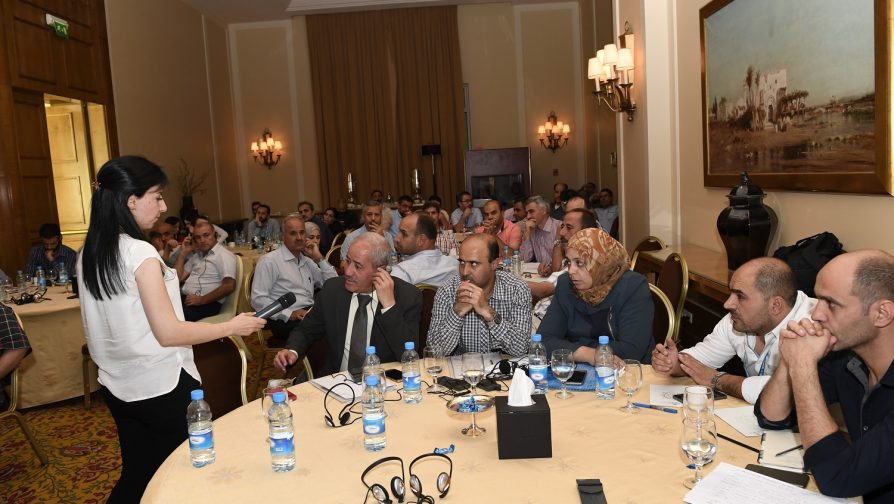“Needs Identification” Workshop for Better Shelter Response in Syria
The Shelter Sector in Syria organized a workshop to create a link between the local authorities and the humanitarian community for better Shelter response throughout Syria in 2017.
The extraordinary level of destruction in Syria has caused massive displacement for more than five years now. This has raised the need for shelter solutions across the entire country. The Shelter sector was established at the early stages of the crisis to respond to the huge shelter needs and is co-lead by the Ministry of Local Administration (MoLA) and the UN Refugees Agency (UNHCR).
The sector has been motivated and inspired by the idea that “shelter” goes beyond securing a roof and that shelter constitutes the base for the family to rebuild their lives. Shelter is the starting point to re-engage in social life and to pursue education, jobs, and other activities.
Shelter is the starting point to re-engage in social life and to pursue education, jobs, and other activities.
This “Governorates Workshop – Needs Identification” event comes as a sector initiative, to create a link between the local authorities who are in charge of and tracking the needs of displaced population on the ground, with the humanitarian community who assumes responsibility of securing the basic needs of the people in need; mainly displaced people and host communities.
Local authorities represented by the Governorates are fully aware of the shelter needs in their respective areas. However, their ability to respond is controlled by the shortage of resources. The international and national agencies are eager to support the affected population with their resources and expertise.
This workshop aimed to gather these two parties together and to give the opportunity to the local authorities to present the shelter needs that they recorded in the areas under their responsibility, which is of high importance to the shelter operational agencies.
The timing of this workshop, while the 2017 plans are being prepared within the HRP, is very critical in order for Shelter agencies to plan realistically for 2017 to reflect and fulfill the actual needs they identified within this workshop. The other main goal is to enhance the communication, collaboration, and coordination level amongst all shelter actors on the national and sub-national level and between the two levels. And to allow opportunities for capacity building planning.
It is much better to consider durable options for sheltering
Without ignoring the need to maintain the emergency response, all Governorates’ representatives expressed an orientation towards more sustainable shelter types. They stated in their presentation that after more than five years developing shelter solutions, it is much better to consider durable options for sheltering.
Out of this direction, they all stressed the significance of rehabilitation of damaged houses for their owners or tenants. They also allocated the zones that could be targeted with this particular response in their respective areas. This was welcomed and appreciated by shelter sector’s partners who have the same vision of directing towards durable solutions.
At Nadia Carlevaro’s request, the shelter sector coordinator, Governorates’ representatives gave a realistic prioritization of needs.
Ahmad Al-Sheikh Muhammad, the representative of Rural Damascus Governorate stressed the importance of coordination, especially for the coming year. He also addressed the need to provide more solid solutions such as housing units, like the one under construction in Adra, and rehabilitation of damaged houses.
The representative of Dara’a Governorate emphasized that each response should be unified and standardized, to have equitable assistance to all beneficiaries. The representative of Aleppo outlined recent developments, which forced thousands of people who were originally displaced to be displaced yet again. The authorities called for the need to have emergency stockpiling and at the same time to work on preparing Jebreen zone to receive these people.
Sonia Afeiseh the director of “Directorate of Planning and International Cooperation” at the Ministry of Local Administration, and Hazza’a Aljondi, the “Technical Coordinator” in the same ministry both highlighted the crucial need to have deep communication and coordination amongst all shelter stakeholders in order to deliver the best possible shelters to the displaced people. They said “Let’s work together” and in this context, they asked the authorities to share their respective areas’ needs and concerns with the humanitarian agencies.
The Participation level was quite active during the workshop and discussions were intense. Participants also expressed their satisfaction with this event, as well as their desire to have such events more frequently.
The workshop was attended by members of the Shelter Sector including:
- Ministry of Local Administration (MoLA)
- Danish Refugee Council (DRC),
- Premièr Urgence (PU)
- Secours Islamic France (SIF)
- Norwegian Refugee Council (NRC)
- The Adventist Development and Relief Agency (ADRA)
- MEDAIR
- International Organization for Migration (IOM)
- Al-Birr Association
- Aoun (Local NGO in Homs)
- Child Care Society (CCS) (Local NGO in Homs)
- Al-Ta’alour (Local NGO in Aleppo)
- Syrian Society for Social Development (SSSD)
In addition to representatives of each of ICRC, UNHABITAT, UNHCR, Shelter Sector, and Representatives of the local authorities (Governorates) to each of; Damascus, Rural Damascus, Homs, Hama, Aleppo, Tartus, Lattakia, Suweida, Qunaitra, Dara’a.


